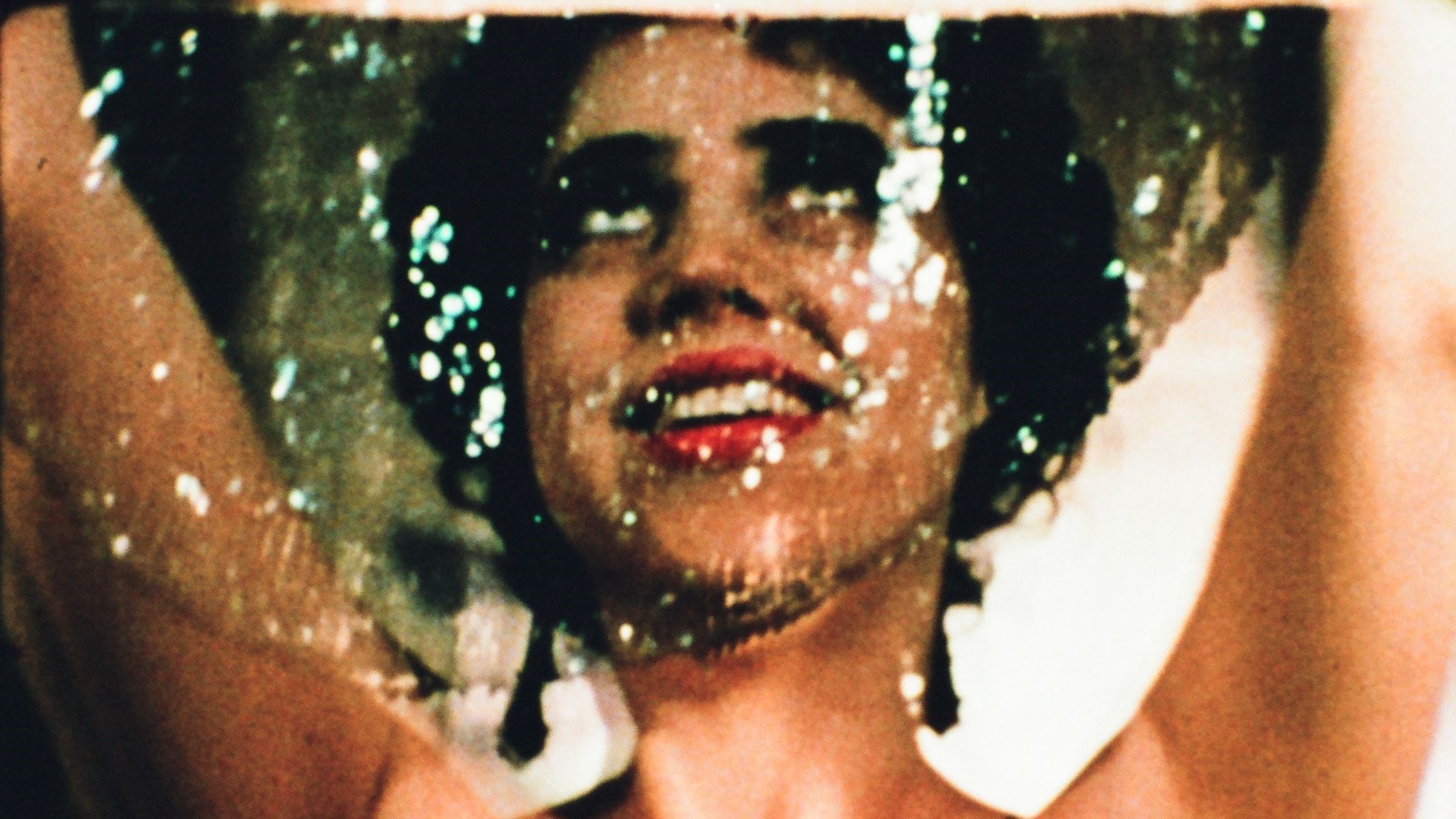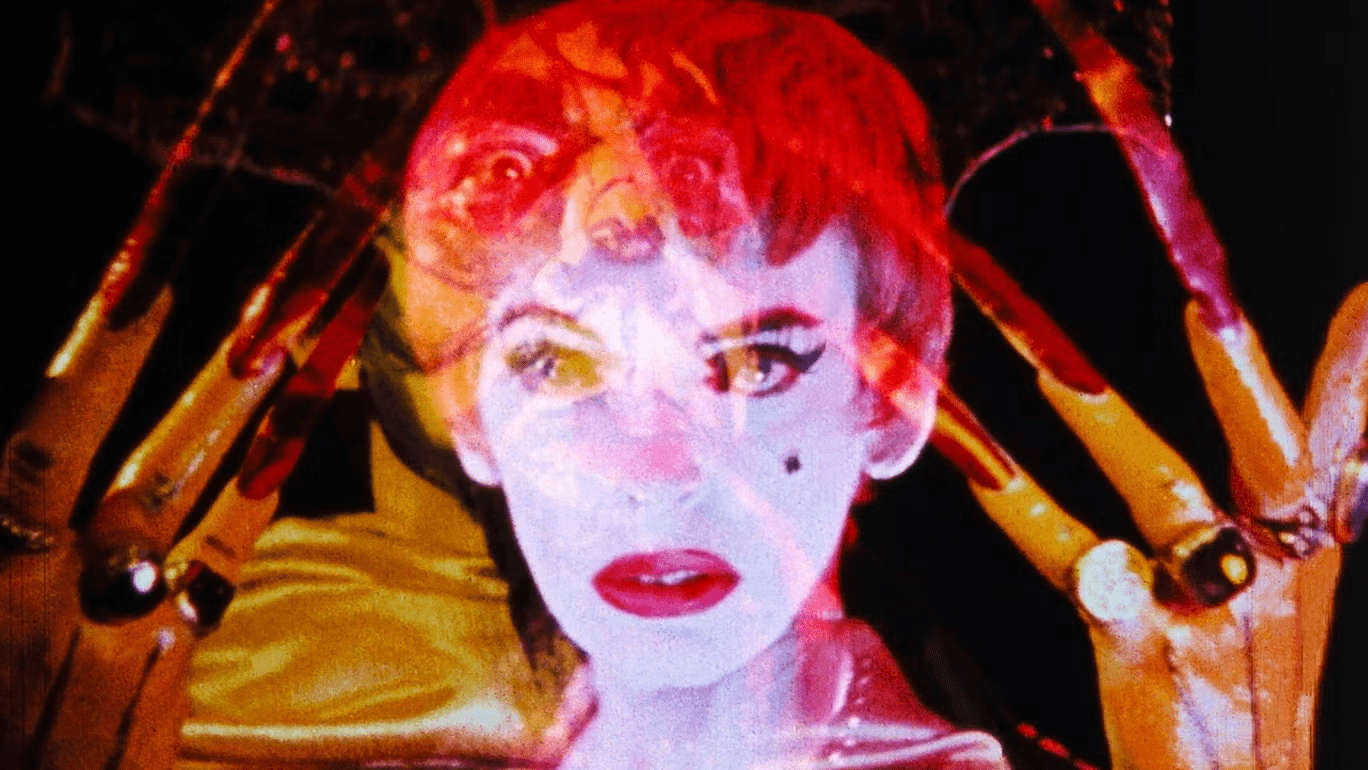KENNETH ANGER
PROGRAMME
Filmoteca de Galicia | Friday May 31st | 8:30 pm | Free entry to all venues until full capacity. It will not be possible to enter the venues after the screening has started.

PUCE MOMENT
Kenneth Anger | 1949 | USA | 16 mm | 6 min
Puce Moment was made by Anger in Los Angeles in 1949. An earlier Anger work, this was the filmmaker’s first film shot in colour, and the only chapter Anger made of a project called Puce Women, which he could not finish due to lack of financing. Puce Women was to be a symphony about the glamour, decadence and decline of Hollywood at the time, with each woman representing a different time of day. Puce Moment survived, and works as a complete film on its own. The short stars Yvonne Marquis, Anger’s cousin, as she hangs around her apartment, trying on glittery dresses, lying on a chaise longue, and walking her four Borzoi dogs. The film’s soundtrack originally featured music from an opera by Guiseppe Verdi, but in the 1960s, Anger rereleased the short with psychedelic folk rock made by the otherwise unknown Jonathan Halper.
“Puce Women was my love affair with Hollywood…with all the great goddesses of the silent screen. They were to be filmed in their homes; I was, in effect, filming ghosts.” (Kenneth Anger)

INAUGURATION OF THE PLEASURE DOME
Kenneth Anger | 1954 | USA | 16 mm | 38 min
This film is derived from one of Crowley’s dramatic rituals where people in the cult assume the identity of a god or a goddess. In other words, it is the equivalent of a masquerade party—they plan this for a whole year and on All Sabbath’s Eve they come as gods and goddesses that they have identified with and the whole thing is like an improvised happening. This is the actual thing the film is based on. With the gods and goddesses interacting and in Inauguration of the Pleasure Dome it’s the legend of Bacchus that is the pivotal thing, and it ends with the god being torn to pieces by the Bacchantes. This is the underlying thing. But rather than using a specific ritual, which would entail quite a lot of the spoken word as ritual does, I wanted to create a feeling of being carried into a world of wonder. And the use of colour and fantasy is progressive; in other words, it expands, it becomes completely subjective—like when people take communion; and one sees it through their eyes. (Kenneth Anger)

INVOCATION OF MY DEMON BROTHER
Kenneth Anger | 1969 | USA | 16 mm | 11 min
The shadowing forth of Our Lord Lucifer, as the Powers of Darkness gather at a midnight mass. The dance of the Magus widdershins around the Swirling Spiral Force, the solar swastika, until the Bringer of Light—Lucifer—breaks through. (Kenneth Anger)

LUCIFER RISING
Kenneth Anger | 1966-80 | USA | 16 mm | 28 min
The film Lucifer Rising is my answer to Scorpio Rising—which was a death mirror held up to American Culture. And for my own sake I had to make an answer to it even though I still see plenty of thanatic elements at work in America . It’s a film about the love generation, but seen in depth-like in the fourth dimension. And I call it a love vision, and it’s about love—the violence as well as the tenderness… I began shooting with the spring equinox. I’m type-casting in my film, and one thing I’ve found is that since my film is about demons—but love demons—the work has to be done fairly fast because they tend to come and go… A demon is just a convenient way of labelling a force… Like Scorpio Rising, Lucifer Rising is about several things. I’m an artist working in Light, and that’s my whole interest, really. Lucifer is the Light God, not the devil, that’s a Christian slander. The devil is always other people’s gods. Lucifer has appeared in other films of mine; I haven’t labelled him as such but there’s usually a figure or a moment in those films which is my “Lucifer” moment… I’m showing actual ceremonies in the film; what is performed in front of the camera won’t be a re-enactment and the purpose will be to make Lucifer rise… It’s the birthday party for the Aquarian Age… Everything I’ve been saying so far has been leading up to this. I’ve been exploring myself and now I’ve got to communicate it. Lucifer is the Rebel Angel behind what’s happening in the world today. His message is that the “Key of Joy is Disobedience”. (Kenneth Anger)
KENNETH ANGER
THELEMA’S CINEMA
In 2023, a few days before (S8) began, Kenneth Anger passed away in San Francisco. During that year’s (S8), Anger’s spirit paid us a visit in a symbolic way. This year, the cinema hall has become a cosmic Ouija board that will be bringing us some of his films as a celebration of his time on earth. Kenneth Anger, a pioneer of queer cinema, counterculture star, pop icon and privy to the best Hollywood gossip, was also a recognized follower of Aleister Crowley’s teachings, which were also conveyed to his films. Crowley, a “black magician” and famous occultist, father of modern Satanism (a cult with no gods, not necessarily linked to Satan) was the founder of Thelema in 1904, a kind of secular religion whose philosophy can be summed up in two phrases: “To do thy will shall be the whole of the Law” and “Love is the law, love under will”. In this programme, we have gathered Anger’s “Thelematic cinema” dedicated to rituals, magic and the esoteric.
The film that opens up our way to the séance is Puce Moment (1949), an invitation to enter a trance, as the veils with which Yvonne Marquis seduces us drop while she gets ready to go out. We then head to Inauguration of the Pleasure Dome (1954), a film dedicated to Crowley in which we attend a meeting of magicians like the ones he himself organized. Filmed at the home of actor Samson De Brier, and starring himself alongside Marjorie Cameron, Joan Whitney, Anaïs Nin and Curtis Harrington, the film also takes influences from Greek and Egyptian mythology, Hieronymus Bosch, The Cabinet of Doctor Caligari and a famous Hollywood costume party called “Come as Your Madness” in an incredible ritual of astounding colours and exquisite rhythms. Set in another plane of reality, we then enter the part of the programme dedicated to Lucifer, the “morning star”, the famous fallen angel. Invocation of My Demon Brother (1979) is an enigmatic ritual of homoerotic derivations completely imbued with underground culture and psychedelia, a conjuring up of pagan forces with powerful imagery, and music by Mick Jagger. Finally, we come to Lucifer Rising (1966–1980), Anger’s most ambitious film, which took him several years and bizarre adventures to complete. Christian theology sees Lucifer as the personification of evil, but Anger portrays him as a bringer of light: inspired by Crowley’s poem Hymn to Lucifer, he characterizes him as a rebellious hero who was to usher in the new age, the Age of Aquarius. The film, shot amid stunning landscapes, featured Leslie Huggins as Lucifer, director Donald Cammell as Osiris and Marianne Faithfull as the goddess Lilith, with appearances by Anger himself and Jimmy Page. The result is an amazing tour of Egyptian gods, solar rituals, torchlight processions, and leaps between millennia, pyramids and flying saucers. The soundtrack was made in prison by Bobby Beausoleil, who was going to be the film’s star; a musician and murderer known for having been part of the Manson Family and the original band of Love.
We can only hope, in view of this legacy, that Anger’s spirit rests in peace under the precepts of Thelema:
This means that each of us stars is to move on our true orbit, as marked out by the nature of our position, the law of our growth, the impulse of our past experiences. All events are equally lawful—and every one necessary, in the long run—for all of us, in theory; but in practice, only one act is lawful for each one of us at any given moment. Therefore Duty consists of determining to experience the right event from one moment of consciousness to another.
Aleister Crowley The book of the Law
Elena Duque
